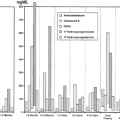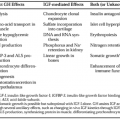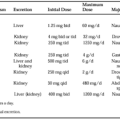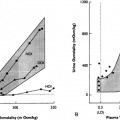METHODOLOGIC ASPECTS OF THE STUDY OF ENDOCRINE RHYTHMS
Part of “CHAPTER 6 – ENDOCRINE RHYTHMS“
DIURNAL VARIATIONS
To investigate circadian hormonal rhythms, a group of individuals is usually studied for a minimum of 24 hours each, following the same experimental protocol. The demonstration of circadian rhythmicity is then based on the observation of consistently reproducible characteristics in the set of 24-hour profiles obtained. To validate such an approach, the group of subjects should be as homogeneous as possible, not only in terms of physical parameters, such as age and gender, but also in terms of living habits, such as bedtimes and meal schedules. To maximize interindividual synchronization, the volunteers should comply with a standardized schedule of meals and bedtimes for several days before the investigation. Blood sampling is usually done at regular intervals through a catheter inserted into a forearm vein. During bedtime hours, the catheter is connected to plastic tubing extending to an adjacent room to collect blood samples without disturbing the subject. Because of the major modulatory effects exerted by sleep stages on hormonal release, it is important to obtain polygraphic sleep recordings using standardized methods for recording and scoring. If polygraphic monitoring is not possible, estimates of sleep onset and awakenings should be carefully recorded. Daytime naps should be avoided. To obtain valid estimations of the circadian parameters, it is necessary to sample at intervals not exceeding 1 hour. Indeed, the pulsatile variations may bias the estimation of the characteristics of the circadian rhythm if sampling is less frequent. Procedures to analyze 24-hour hormonal profiles usually involve the fitting of a smooth curve to the data. The times of occurrence of the maximum and the minimum of the best-fit curve are often referred to as, respectively, the acrophase and the nadir. The amplitude of the circadian rhythm may be estimated as 50% of the difference between the maximum and the minimum of the best-fit curve.
PULSATILE VARIATIONS
The definition of an optimal sampling protocol to study pulsatile hormonal fluctuations depends on the type of phenomenon under study. Presently, sampling at 1-minute intervals represents probably the fastest rate technically achievable with reasonable precision. Sampling every few minutes uncovers high-frequency, low-amplitude variations superimposed on the slower pulsatile release occurring at hourly intervals. These intensified rates of venous sampling may not allow for the estimation of the characteristics of major secretory bursts, because the total duration of sampling compatible with this rate of blood withdrawal limits the observed number of large peaks. Sampling rates of 20 and 30 minutes only detect major pulses lasting >1 hour.
Stay updated, free articles. Join our Telegram channel

Full access? Get Clinical Tree








